52 F. average high on April 4.
62 F. high on April 4, 2012.
.22" rain predicted for Saturday (NAM model).
Over 1" of rain (and some wet snow) possible next week.

Perpetual March
This is a test. This is only a test. Can you
keep your sense of humor, in spite of the S-word being tossed around in
early April? Will you crumble under pressure, or be stoic, brave and
forgiving?
It feels like The March That Wouldn't End.
Before you tell me what to do with my Doppler, long range guidance is
(consistently) bringing a real warm front into Minnesota the 3rd week of
April, a shot at 60F after April 16. Yes, we may turn a big corner in
about 10 days. In the immortal words of Dan Rather: courage.
Clouds increase later today; showery rains
likely tonight into Saturday. The ECMWF (European model) is wetter than
U.S. models for tomorrow, hinting at .50 inches of rain. The same model
shows another surge of rain arriving Wednesday & Thursday of next
week, possibly mixed with wet snow north/west of MSP as a storm tracks
north across the Plains. It's too early for specifics; right now I
suspect it'll be just warm enough for mostly-rain.
NOAA expects the Red River to crest after April
15. A worst case scenario: sudden warmth coupled with heavy rain,
accelerating snowmelt and run-off on frozen ground. We can't rule that
out; Red River residents need to stay alert.
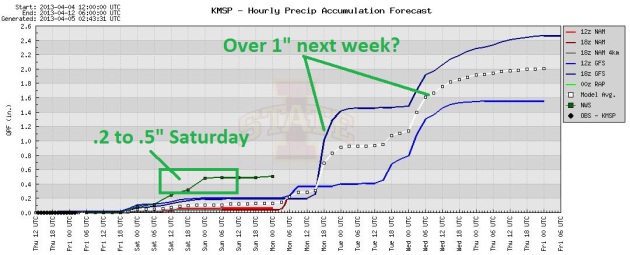
Trending Wetter. As I've been
mentioning for a few days, models are hinting at a considerably wetter
pattern, starting Saturday, spilling over into next week. About .2 to
.5" of rain falls Saturday, but much more significant amounts are
possible next week as a slow-moving storm pushes north across the
Plains, fortified with moisture from the Gulf of Mexico. Graph: Iowa
State.


April Snowmobiling. And
cross-country skiing, and assorted snowball battles? Head up to Lake
Superior's North Shore, where Saturday's storm may drop more than 4-6"
of snow, with up to 8"+ over the U.P. of Michigan. Yes, I'm enjoying
"spring".

Slow Motion Spring (And A Possible Winter Relapse).
I'm not buying it yet, but the ECMWF is suggesting a rain-snow mix next
Wednesday, changing over to mostly rain by Thursday before skies dry
out by next weekend. Accumulating snow the second week of April? Not
unheard of, and at the rate we're going this year nothing much would
surprise me.
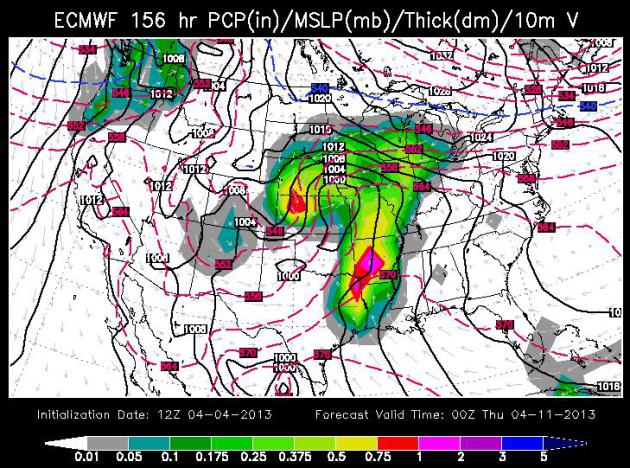
Cautious Optimism About The Drought.
Will rain fall after frost entirely leaves the ground? Let's hope so,
but the trends are somewhat encouraging. ECMWF guidance valid next
Wednesday evening shows an intensifying storm over the Central Plains,
Gulf moisture streaming north, fueling an expansive shield of rain (and
some wet snow).
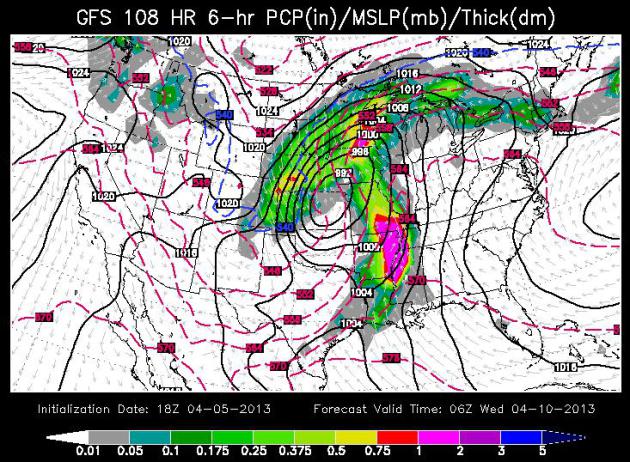
Hope Springs Eternal. GFS guidance
shows chilly weather into next weekend, followed by moderation the
third week of April, maybe a shot at 60F after April 18? I know - I'll believe it when I see it.

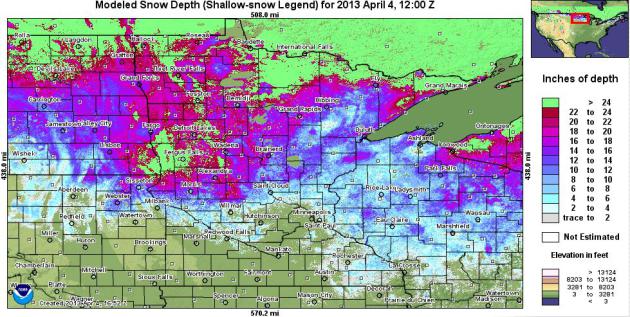
- Snow depths range from zero in the
southern one-third of Minnesota to over 20 inches west central
Minnesota, north central Minnesota, and in the Lake Superior highlands.
[see: NWS Snow Depth Estimation Map | Snow Depth Maps] - The amount of water content in the snow pack
is estimated to be in excess of five inches in some west central and
north central Minnesota counties. The large amount of water on the
landscape, lying upon an impervious frozen surface, has led to a high risk for major flooding in the Red River basin.
[see: NWS Snow Water Equivalent Estimation Map] - The U.S. Geological Survey and Minnesota DNR report that stream discharge values
vary widely across the state. After the initial flush of snow melt
runoff recedes, stream discharge values will quickly fall below
historical medians unless there is a very wet spring.
[see: USGS Stream Flow Conditions | MNDNR Weekly Stream Flow Maps and Tables] - Water levels on most Minnesota lakes are low due to the dry summer and autumn of 2012. Lake Superior's water level is approximately one foot lower than its historical average for this time of year.
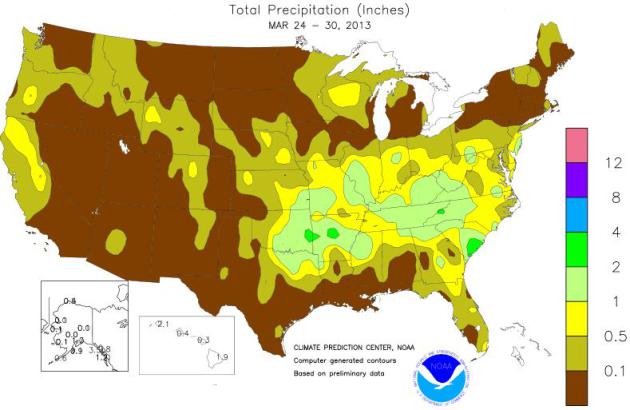
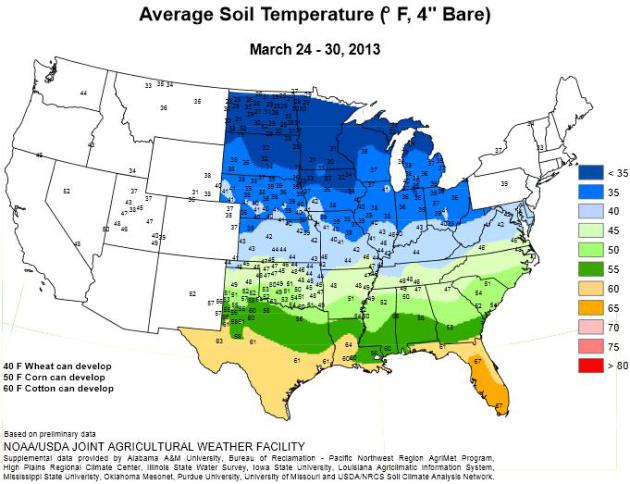

Graphic credit above: "Comparison of tornadoes F/EF3 or higher in 1974 and 2011." Chart by Kathryn Prociv.
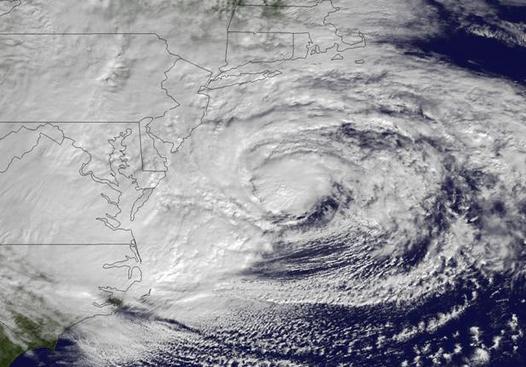
Criticism After Sandy Leads To Changes In The Way Hurricane Warnings, Watches Are Issued. Technically, Sandy wasn't a hurricane (warm core storm) when it hit New Jersey and metro New York. NOAA discontinued Hurricane Warnings, which caused many coastal residents to lower their guard a little. Big mistake. Changes are coming, as documented in this Washington Post story; here's an excerpt: "...Under the new policy, the hurricane center in Miami will continue to put out warnings and advisories if a storm threatens people and land, even if a hurricane or tropical storm loses its name and becomes something different. “Our forecasters now have more flexibility to effectively communicate the threat posed by transitioning tropical systems,” said Louis Uccellini, the director of the National Weather Service, which is part of the National Hurricane Center. “Sandy’s forecast was remarkably accurate and under a similar situation in the future, forecasters will be able to choose the best option to underscore the urgency involved...”



Above Average. It's getting better out there, slowly but slowly. After a gray, showery start the sun came out, highs topping 50 in the Twin Cities and Rochester with gusty northwest winds. Elsewhere highs ranged from 35 at International Falls to 45 St. Cloud.
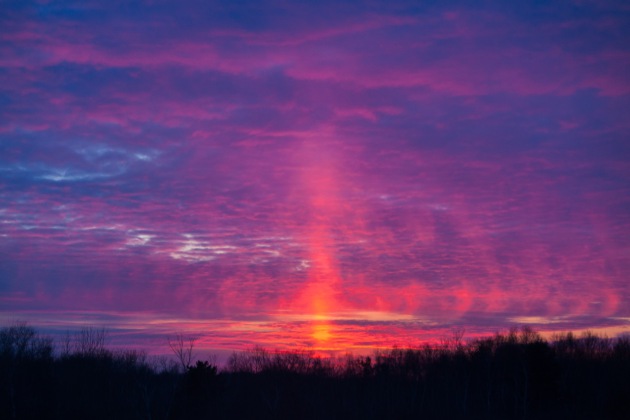
TODAY: Sunny start, clouds increase. Winds: SE 15. High: 45
FRIDAY NIGHT: Showers develop. Low: 40
SATURDAY: Periods of rain. Soggy. High: 49
SUNDAY: Intervals of sun, a drier day. Wake-up: 35. High: 48
MONDAY: Passing shower possible. Wake-up: 36. High: 46
TUESDAY: Mostly cloudy; cool breeze. Wake-up: 32. High: 45
WEDNESDAY: MSP rain, mixed with snow north? Wake-up: 33. High: near 40
THURSDAY: Periods of rain. Wake-up: 34. High: 42
* photo above: Steve Burns.
Climate Stories....
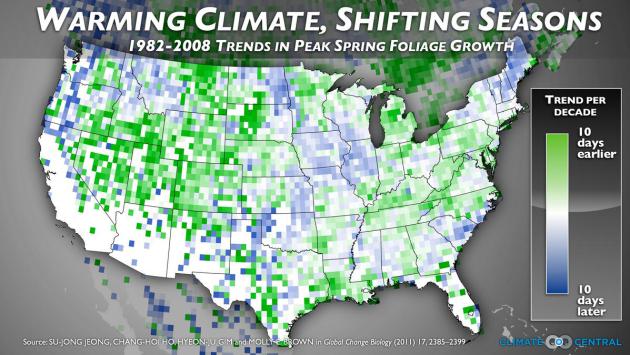

Keystone XL Stirs Montana Farmer's Climate And Crop Concerns. Huffington Post reports; here's an excerpt: ".."In terms of carbon emissions, Alberta tar sands are among the worst of the worst," said John Abraham, an engineering profesor at the University of St. Thomas. The other problem, he added, is the massive quantity of that crude oil. A study published last year in Nature Climate Change found that if all the oil in Alberta was harvested -- now only a theoretical possibility unless new technology emerges as fracking did for tapping previously hard-to-reach reserves of natural gas -- global temperatures would rise nearly 0.4 degrees Celsius (about 0.7 F), without taking into account emissions from energy used during the extraction, upgrading and refining of the heavy crude. That figure is arguably significant in the context of keeping any increase in global temperatures below the 2-degrees Celsius benchmark world leaders have agreed is critical for avoiding the most dangerous effects on the climate system. The planet has already warmed by 0.8 degrees Celsius..." (graphic: U.S. State Department).
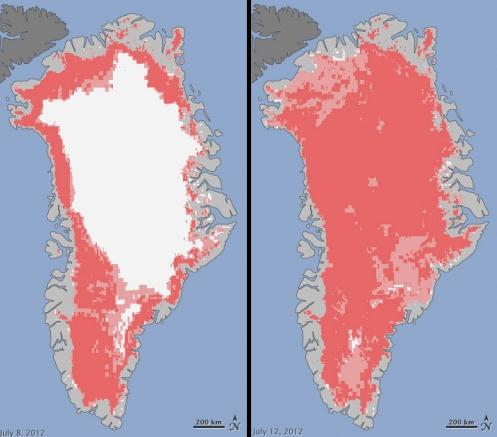
Graphic credit above: "Extent of surface melt over Greenland's ice sheet July 8, 2012 (left) and July 12, 2012 (right), melting shown in pink." Courtesy of NASA.

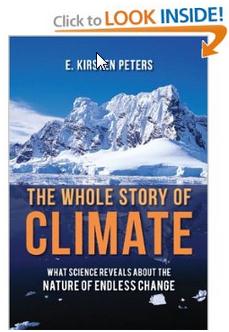
The Hype of Sustainability
Early on, Ms. Peters tears away at the misguided belief that if we develop sustainable technologies and change human behavior it will prevent the globe from "flipping" into the next Ice Age. It will not. We have delayed the latter some ticks of the geological clock, but we can't stop climate change, because that is what the earth has been doing for millions of years -- long before people walked upright..."
No comments:
Post a Comment